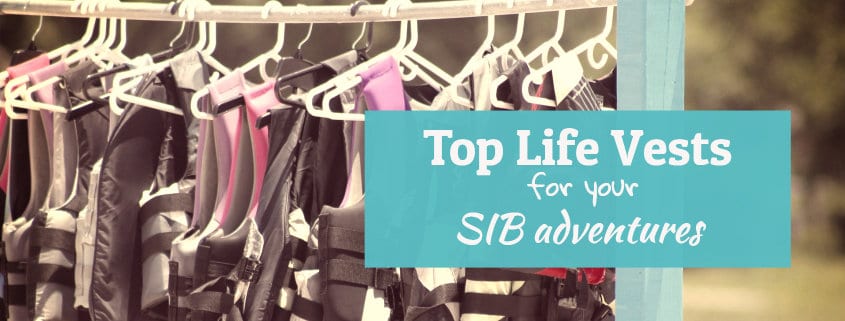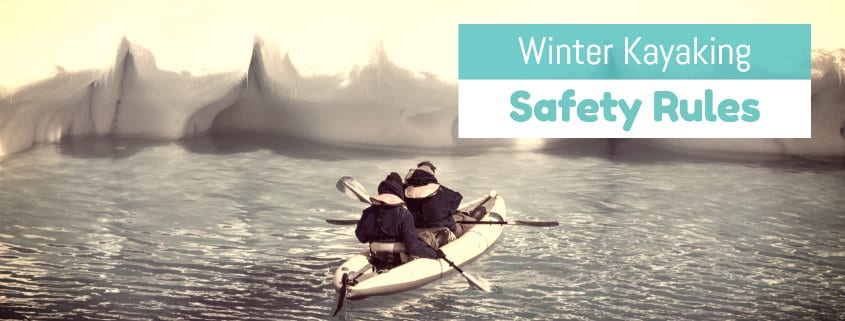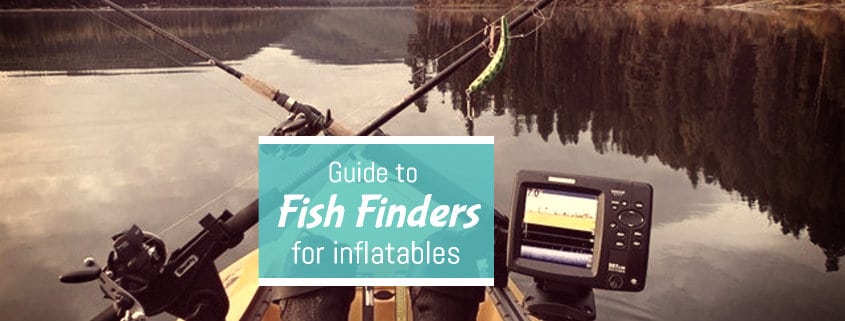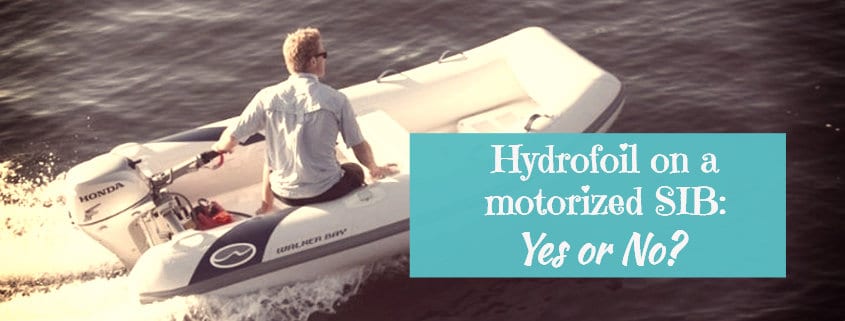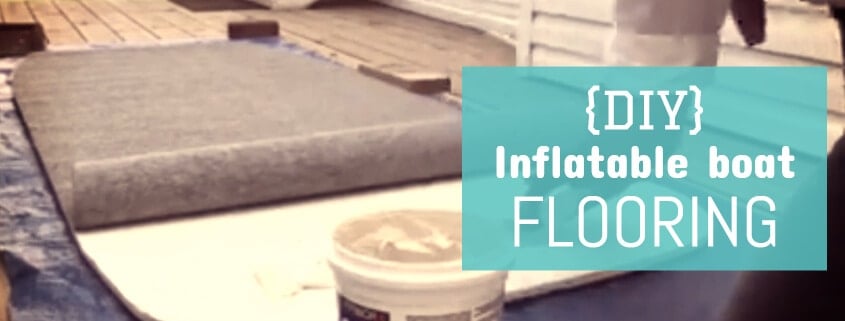A life vest, also known as life jacket or personal flotation device (PFD), is considered fundamental safety gear for boating and kayaking. If you’re out fishing, recreational boating, and doing various water sports, you and the kids in your SIB should always wear a life jacket.
Life jackets are designed to keep one’s head above the water to prevent drowning. They are a must-have onboard your inflatable, but remember that it’s not enough to just stow them nearby.
Most drowning accidents occur even when life vests are available nearby, but victims chose not to wear them because they know how to swim.
Here are some frightening statistics on why you should always use life-vests:
- The majority of people who drown are able swimmers.
- Most drownings happen in inland waters, only 10% happen out at sea.
- Out of all the drowning fatalities that happen, 85% of the victims do not wear a PFD.
- A child can drown in 20 seconds.
Contents
All About Life Vests
The role of a PFD is to provide floatation to the wearer in the water. The aim is to keep the wearer’s head above the water. The level of buoyancy required for this is different for people of different body composition (fat, muscle, lung size, bone density), and will also be different in various water conditions.
Life vests provide buoyancy in 3 ways:
- Inflatable PFDs – An air chamber must be filled manually or automatically. Such life vests are compact, but require regular inspection to make sure the air chambers hold air and are not punctured.
- Inherently buoyant material PDFs – No inflation required, as the material is inherently buoyant. These are the most popular and safest types of life vests. They are bulky, but save lives every day.
- Hybrid inflatable-inherently buoyant PDFs – These life jackets mix the best of both worlds, but they are also the most expensive type of life jacket on the market.
What are life vests made out of?
The outside material of life vests is either nylon or neoprene.
As you would expect, both of these materials have their advantages and disadvantages as well.
Nylon life vests
- Lighter than neoprene
- Cheaper than neoprene
- Most suitable for paddle sports
Neoprene life vests
- More comfortable than nylon
- Has a slight stretch, which nylon does not
- Higher buoyancy than nylon
- Provides warmth in water
- Most suitable for water sports
The inherently buoyant material used inside the vest itself is a closed-cell foam or foamed plastic.
By the way, before the 1900’s, life jackets were made out of cork and wood.
Rules and regulations on wearing life vests
The United States Coast Guard (USCG) requires each recreational boat to have one wearable life jacket for each person onboard.
However, it does not require adults to wear them while boating. Nevertheless, most states require individuals to wear life vests when boating or participating in water-sports activities, may they be recreational or not.
Some states have a slightly different law, so it will be wise to familiarize yourself with laws concerning it in your own state.
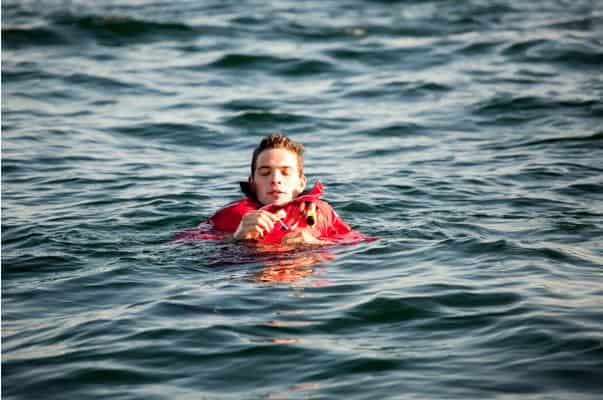
For children, USCG obliges that children under 13 year of age must wear a properly-fitted US Coast Guard approved life vest when on a moving boat; some states, however, have different laws regarding age requirements.
Having said that, there are particular life vests that are required to be worn by children of certain ages.
Types of PFDs
There are 5 types of personal floatation devices you can get.
Type I – off-shore life jacket
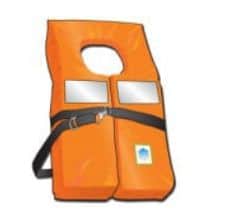
Type 1 life vests are designed to keep the wearer facing up, especially those who are knocked unconscious.
They have the highest amount of buoyancy compared to other types of life vests. They also have extra padding, foam, and fabric which allow the wearer to maximize body heat retention.
However, they can be a little bulky and uncomfortable when worn.
This type is best used when operating on open water or distant locations where immediate rescue may not be possible.
They are also recommended to be used during solo operations or trips.
Type II – near-shore buoyancy vest
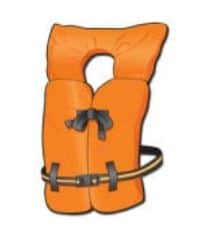
Type 2 PFDs are less buoyant than a type 1, which makes them less effective in making adult wearers float face up in the water by themselves.
However, they are ideal for children because their weight requires less buoyancy.
This type of life vest is designed to be more comfortable and less bulky; however, this also makes it inadvisable to be used offshore.
Also, they cannot be used for long hours in rough seas.
Nevertheless, they are perfect for near-shore locations, calm waters, or anywhere that immediate rescue is highly expected.
Type III – floatation aid
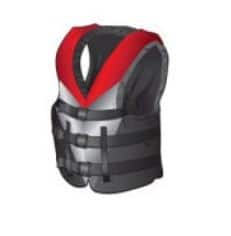
Type 3 life vests are the most commonly used PFDs by adults.
They have the same amount of floatation as a type 2, but are relatively lighter and more comfortable than both type 1 and 2.
They do not aid in turning the wearer in a face-up position, which makes them inadvisable for children.
Nevertheless, they are perfect and comfortable to be worn for various water sports, including boating, canoeing, and kayaking.
Type IV – throwable device
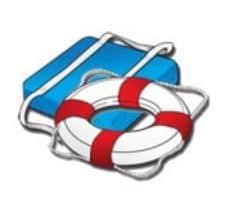
The 4th type of PFD isn’t actually a type of life vest; however, having one onboard can be handy during a crisis.
It is a throwable device that can be thrown to someone who’s fallen into the water and is drowning; this little buoy can help keep them afloat until they can be rescued.
Many people can recognize this type of PFD as a ring buoy, but it can also come in the form of a seat cushion or a U-shaped buoy.
Although it can serve as a substitute for wearable life vests, this type of PFD is not as effective as life vests and is not suitable for use on rough seas.
Type V – specialty use device
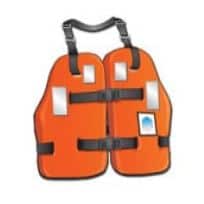
Type 5 PFDs are personal floatation devices that are designed for a specific activity.
They can be used for windsurfing, water skiing, and kayaking, depending on their construction.
However, be sure to check the label to know the limits of their usage.
Generally, these are the least popular and used type of PFD.
They are mostly used by professionals or athletes.
Best Life Vests for Adults
Onyx MoveVent Dynamic Paddle Sports Life Vest
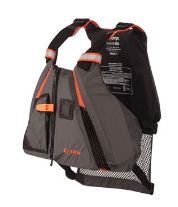
Even though the Onyx MoveVent is popularly known and primarily designed for paddle sports, it also makes for an exceptional all-around life vest.
It has an intuitive design with a form-fitting and flexible front, a bubble-filled padded upper back fitting, and a lower back mesh support; this makes sitting and moving around easier and more comfortable whilst snugly fitting the wearer.
It has a 200 denier nylon ripstop and nylon oxford construction that makes it both durable and long-lasting.
It also features neoprene padded adjustable shoulder straps and open sides with adjustable belts to maximize mobility.
In addition to that, it is also accentuated with an expandable zippered pocket with mesh drainage, a zip assist loop, and a built-in drying loop, all of which create a convenient assemblage to make the wearer comfortable.
It also has SOLAS grade reflective components and an attached whistle, that can help rescuers and searchers locate your position better.
Stohlquist Flo Life Jacket For Women
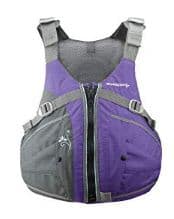
It can be difficult to find a good life vest that is specifically constructed for women. However, you don’t need to look further, for the Stohlquist Flo Life Jacket is able to provide one that is primarily designed for women.
It has a 400 x 200 denier ripstop shell and nylon construction, which makes it extremely durable. Despite its sturdy construction, it is tailored to conveniently fit a woman’s form: it provides good back support and doesn’t get bulky in the chest area.
It also has adjustable shoulder straps that enable it to adapt to the wearer’s preference.
It is also constructed with lightweight PE foam with inner mesh lining, which helps improve air circulation better.
Astral Buoyancy V-Eight Life Jacket
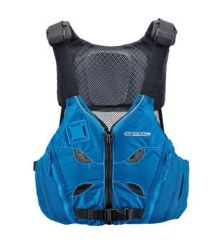
The V-Eight Life Jacket has a lightweight, modern design with a mesh base.
It was generally tailored to allow the wearer to be able to move freely. Because of this, it has a front panel that sits lower on the body compared to other life vests on the market. The shoulder straps are not invasive either, eliminating the chance of the vest riding up to your face.
The padded back is also placed a little higher, making room for mesh to cover most of the region. This ensures that the vest will not be forced up when sitting on benches with a backrest.
It also has side and shoulder straps that are adjustable, allowing the wearer to adjust it according to his or her preference. It also features heavy-duty zippers and backup waist belts, securing the vest on the body.
Other features include an attached whistle and two (2) pockets, where you can put small safety equipment that can help in case of emergencies.
Life Vests for Kids
Stohlquist Unisex Child Nemo Child Life Jacket
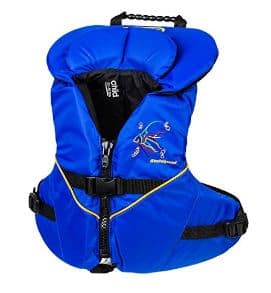
The Nemo is a USCG type 2 rated vest, highly recommended for infants and toddlers.
Out of the water, it allows your child to freely and conveniently move around.
However, it restricts the movement of the child in the water to prevent him/her from drowning, keeping him or her in a face-up position.
The collar and the neck support provides security in keeping the child’s head above the water.
The collar also serves as a nifty secondary feature: it can help drag the child to safety.
Stearns Heads-Up Child Vest
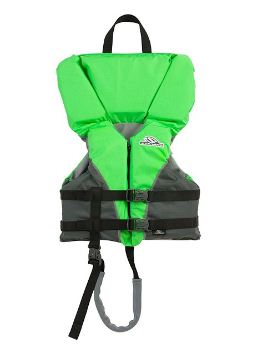
Living up to its name, the Heads-Up Child vest manufactured by Stearns really does what it’s built for: keeping your child’s head above the water.
Like the Nemo Child life jacket, it’s also tailored to support mobility out of the water, but restricts movement to keep your child’s head afloat in case of unwanted accidents.
But, the best feature is the adjustable strap that goes between the legs.
This helps secure the life vest on children especially on those who love to tinker and unclasp their life vests off.
Mustang Lil’ Legends 100
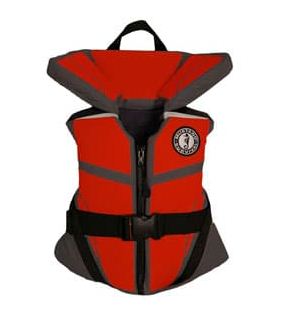
The Mustang Lil’ Legends 100 is a type 2 PFD with a mesh base.
It also has front and back floatation panels with internal airflow that helps keep children cool.
It is designed with a neck cut to prevent the child’s chin from sliding down, keeping the head above the water.
For added security, it also features a waist strap and a crotch strap; both of which ensuring that the life vest doesn’t slip off your child’s body no matter how much he/she moves.
Life Vests for Dogs
Ruffwear – K-9 Float Coat for Dogs
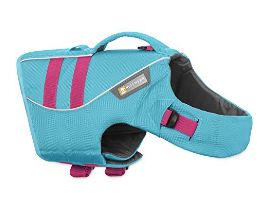
The Ruffwear K9 life jacket is constructed with extremely durable and abrasion-resistant materials.
It also features a top handle that lets you conveniently hoist your dog out of the water in case of emergencies.
The vest has cell foam panels and added floatation on his belly to ensure that your dog stays afloat, without constraining him from his natural swimming position.
In addition to that, it also features reflective trims, so you will be able to spot your pooch amidst strong waves.
Outward Hound Granby Life Jacket

The Hound Granby life jacket is has a neoprene constructed belly band and adjustable chest and neck flaps, that aids your dog to stay afloat.
It also features a front floatation panel to keep his head above the water, even amidst strong and rough waves.
In addition to that, it also has top handles to help you lift your dog up when necessary.
Paws Aboard Doggy Life Jacket
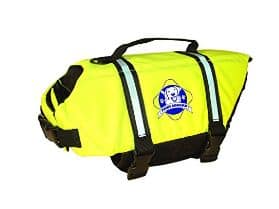
The Paws Aboard Doggy life jacket’s defining feature is its heavy duty velcro fastening system, which allows putting it on your dog a lot easier.
It does, however, come with adjustable straps that keep the vest secured on your pooch.
And like the two other doggy life vests in this list, it also comes with a handle so you can quickly lift your dog up when the situation becomes dire.

